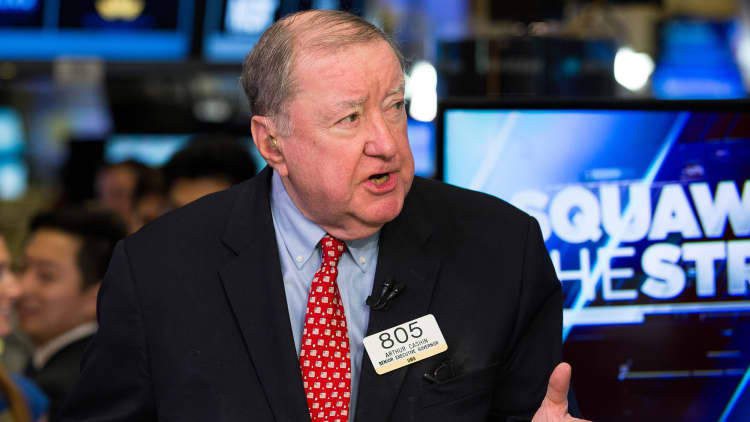
After all these years, the market's story is still same: It still likes bad news.
There's little else to explain a gain in stocks Friday that came on the heels of yet another disappointing August jobs report. Payrolls grew just 151,000 compared with expectations for 180,000, but that was only half the story. Job quality was weak, salary growth and the workweek eased, and if it wasn't for a government hiring spree, the numbers would have been considerably worse.
Yet the market reaction was predictable to what was an uninspiring report. Stocks rose amid expectations that the job numbers, though a far cry from disastrous, were just weak enough to keep the Fed on the sidelines for a few more months.
"This is probably comforting to the market," said Jeff Kleintop, chief global investment strategist at Charles Schwab. Investors "in the first data readings for September saw a little bit of a weaker start. But it is happier to see the Fed wait just a little longer, with December the most likely place" for the next rate hike.
Trouble is, the bad-news-is-good-news meme was supposed to have expired long ago.
By this time, according to the Fed projections in December, the economy was supposed to be strong enough to be gearing up for its third rate hike this year at the Sept. 20-21 Federal Open Market Committee meeting. Instead, the central bank has yet to follow up on December's quarter-point hike and probably won't do so at the upcoming FOMC gathering.
The scorecard this year, then, won't be pretty for Fed forecasting: Four projected rate hikes in December, cut to two in June, cut to — maybe — one by the end of the year.
"They seem to be somewhat snake-bitten," said David Donabedian, chief investment officer at Atlantic Trust Private Wealth Management. "Just when they make a concerted effort to prepare the markets for an imminent rate hike, the economic data goes south. That appears to have happened again."
Indeed, the data have been wobbly lately.
The biggest shock, though, wasn't Friday's nonfarm payrolls report. Rather, it was Thursday's Institute for Supply Management's reading on manufacturing that indicated a contraction. That was coupled with a flat reading for new construction and previous indications of continued weakness in productivity.
The rest of the economic data have been OK, with the consumer standing out. Gross domestic product was awful for the first half, with an average gain of less than 1 percent, but the Atlanta Fed is projecting the third quarter to grow at a 3.5 percent pace.
Also, the Fed doesn't seem terribly interested in GDP as a policy indicator, given that it last hiked in a quarter when the economy grew just 0.9 percent. Meanwhile, business inflation expectations are at 1.8 percent, below the Fed's 2 percent target.
But the Fed has had a change in mindset of late regarding inflation and what the natural funds rate would be, prompting a lower-for-longer mindset despite some hawkish language.
"If you take the hints that have been planted by (Fed Chair Janet) Yellen, (Vice Chair Stanley) Fischer, (New York Fed President (Bill) Dudley and others at Jackson Hole, there's an implication that the slope of rate hikes over the next couple of years is likely to come down," Donabedian said. "If you just look at the market expectations through fed funds futures, the Fed really seems to be acknowledging that they're moving to the market."
The market continues to like a dovish Fed, particularly at a time when valuations look a bit expensive and earnings are hard to come by.
As things stand for the rest of 2016, traders assign just a 24 percent chance of a hike in September, a level that briefly slumped to 12 percent immediately after the jobs report. There's a 56.9 percent chance of a December rate rise, according to CME data. Fed funds futures contracts indicate an expected rate of just 0.93 percent as far out as August 2019, just 0.53 percentage point above the current level.
Last time the Fed hiked, the market went into a two-month tizzy. Should it finally move again in December, hopes are that the market can withstand another modest tightening.
"Whether the Fed tightens or not, I think the markets are going to be fine," said Jim Paulsen, chief investment strategist at Wells Capital Management. "But I think if they do tighten, that would be the better thing. To show normalization would help."


